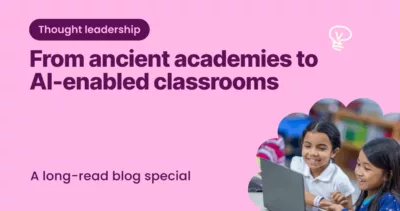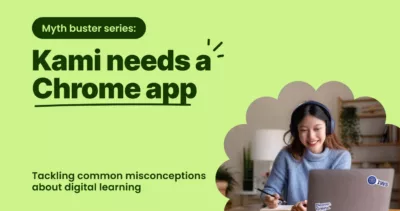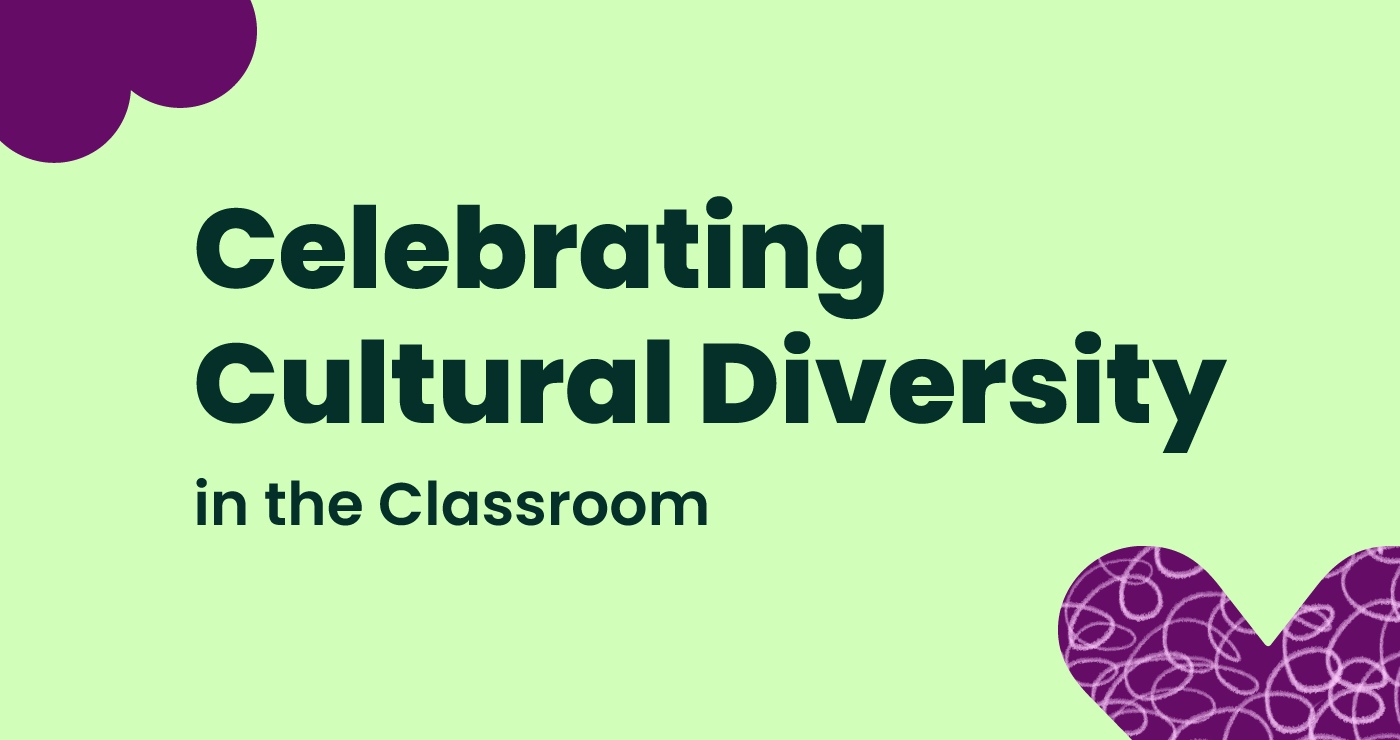Four quick tips to help you bring celebrations of diversity into your classroom
Celebrating different cultures in the classroom is extremely important as our schools become more multicultural. Students should feel safe to express who they are and share their beliefs, values, and traditions.
We can all learn from different backgrounds and cultural perspectives and when students feel a sense of belonging at school, they are likely to be more engaged and work to achieve their goals.
Providing meaningful ways to celebrate cultural diversity gives students the chance to share their unique backgrounds and feel a sense of self-worth. Here are four easy tips to help you achieve a more inclusive classroom!
Tip 1: Get to know your students
Doing something as simple as making sure you pronounce your students’ names correctly—especially those from non-English-speaking backgrounds—is a great start to building positive and meaningful relationships. Names can have important links to culture and family history, and learning the correct way to say them shows respect for and interest in the students’ cultural background.
Hint: An easy way to do this is by writing down how the name is said, phonetically, on your roll.
Also be sure to get to know your students’ interests, hobbies, what they feel like they’re good at, and where they think they need to improve. Back-to-school ice-breaker tasks are a fun and simple way to get the ball rolling at the beginning of the year.
For example, start by getting students to create their own ‘Who am I?’ profiles, or use this awesome Kami All About Me resource. Or, simply get them to find classmates with similar and/or different interests, cultures, or backgrounds – this way, students find things in common, learn new things, and break down barriers to encourage an accepting classroom environment where they’re comfortable expressing their own culture.
Tip 2: Teach diversity
If we want our students to celebrate their cultural differences, it’s important to make sure that they understand what diversity is first! Creating lessons that allow them to explore different aspects of diversity is a great way to do this. These could be one-off lessons or incorporated into aspects of your subject curriculum; for example, Social Studies would be a great place for this to sit.
Depending on the age of your students, lessons could focus on things like ethnicity, race, culture, gender identity, and sexual orientation. This way students can apply these to themselves and those around them. An example of a simple task is to have students write down one thing on a sticky note that they think makes them unique or diverse (it could be anonymous. Then put these on the whiteboard or the wall to be shared and celebrated!
Tip 3: Provide cultural contexts
Part of responsive teaching is to make sure we give students the opportunity to explore their own and different cultures through their learning. Think about how you can create lesson plans to provide classroom resources that showcase people or examples from your students’ cultures. This is a great way to make learning more inclusive!
You could use a short story or novel, a study of a famous scientist or inventor, or work by different artists from around the world. Students will be able to see themselves in the material, which will connect them to the learning. Exploring different cultures during the school year will help students understand and respect diversity. This can encourage cultural biases to be challenged.
Tip 4: Make cultural diversity visible
Turn your classroom into a visual celebration of culture!
Set aside a space in your classroom for your students to display aspects of their diverse backgrounds.
These could include:
- Maps and flags of the different countries they trace their heritage to
- Greetings or phrases in the languages they or their families speak
- Photos of traditional food and/or dress from their cultures
- Displays of work they have completed from Tip 3
Aside from wall displays, a few other ways to make cultural diversity visible in your classrooms can be through:
Real-life experience
Giving students the opportunity to hear from guest speakers who they could identify with. For example, having family members come in to share information about their culture can be an easy way to do this, and this will help to build inclusive relationships with your school community.
Cultural celebrations
These could include celebrations of language, arts, food, and performances. You could organize a mini ‘Classroom Culture Celebration’ which could span across a day or a week, with different activities and examples of food, dance, music, and languages from cultures around the world. This would provide students with another opportunity to learn about different cultures in a fun way, helping to gain a better understanding and appreciation of cultural diversity.
Good luck with transforming your classroom into a space where cultural diversity is celebrated and share anything you do with us on social!
You may also like

From ancient academies to AI-enabled classrooms

Improving AI literacy in American schools


